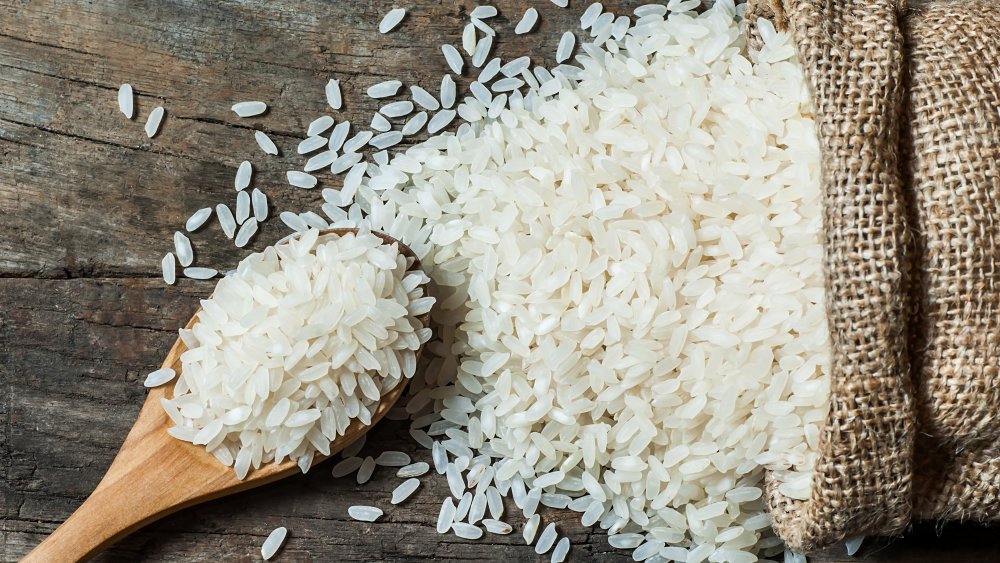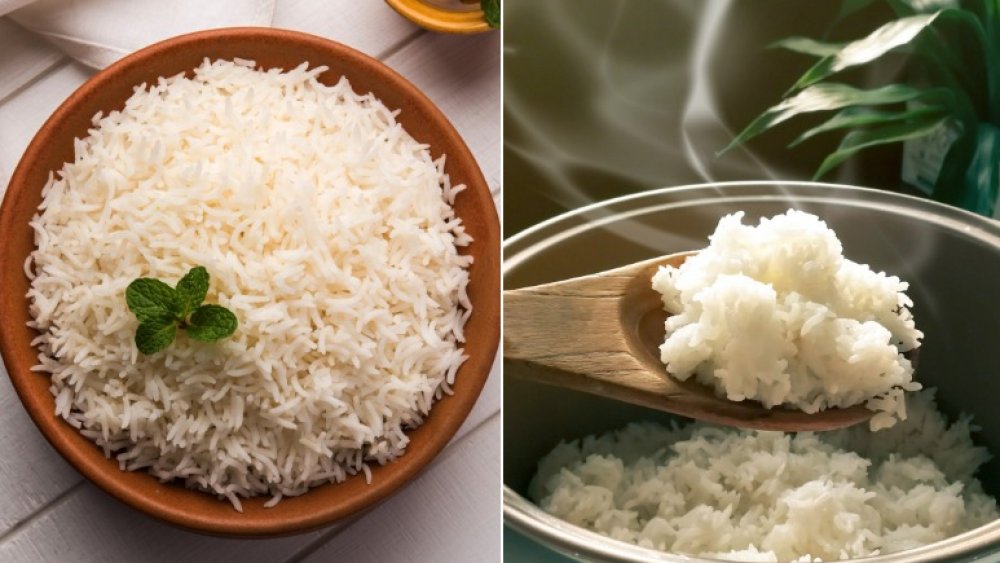This Is The Actual Difference Between Basmati Rice And Jasmine Rice
We've all been there. You're craving your favorite spicy chicken with red curry and that awesomely fragrant rice your favorite Thai restaurant serves. Instead of ordering takeout, you ambitiously head to the grocery store, recipe in hand, ready to buy everything you need to make it yourself. Then you get to the rice aisle and you have no idea if you should get basmati or jasmine rice. It's certainly not a decision you should take lightly. Rice is the foundation of the dish. If it doesn't clump together just right and soak in all that rich curry sauce while imparting its own delicious flavor and perfume, it's simply not worth it! Instead of just grabbing the easiest box of instant Uncle Ben's, which is a downright insult to rice lovers worldwide, consider this your cheat sheet on the differences between these two aromatic grains.
At the most basic level, Thai cuisine is usually paired with jasmine rice, although it is also grown in Cambodia, Laos, and Vietnam, and featured in various dishes from these countries, as well. Whereas basmati is usually paired with Indian and Pakistani dishes and is a common grain across the Middle East because of trade routes from India (via FoodsGuy and Tastessense). The actual science behind why each rice pairs with different cuisines is a bit more complicated.
The difference between basmati rice and jasmine rice is most obvious after cooking
Both basmati and jasmine rice are classified as long grain rice, but jasmine has a slightly shorter and rounder shape to it when dry, and basmati has pointier ends giving it a needle like appearance (via Tastessence). After cooking, however, it's easy to tell these two apart. Basmati rice nearly doubles in length and maintains its shape creating a fluffy, light rice with distinct individual grains like the photo on the left. Jasmine rice, on the other hand, plumps up into moist, sticky clumps losing their original shape, and allowing the grains to be easily eaten with chopsticks (via Cooks Illustrated).
The textural distinctions between the two rices occur thanks to differing amounts of the two starch molecules that help the grains retain their shape: amylose and amylopectin. Basmati has a high concentration of amylose, which is considered a straight molecule with a tight formation which allows the grains to stay intact and retain their distinct shape when cooked. Conversely, jasmine rice has a higher concentration of amylopectin, which is a multi-branched molecule that when cooked gives the rice its clumpy appearance and sticky feel.
With such unique textures, it's understandable why these grains aren't interchangeable in their applications. Where jasmine goes well with rich creamy dishes like Masaman curry or even a hearty beef stew, basmati is best served with Indian curries, as a rice pilaf, or even in your favorite paella recipe (via FoodsGuy).

